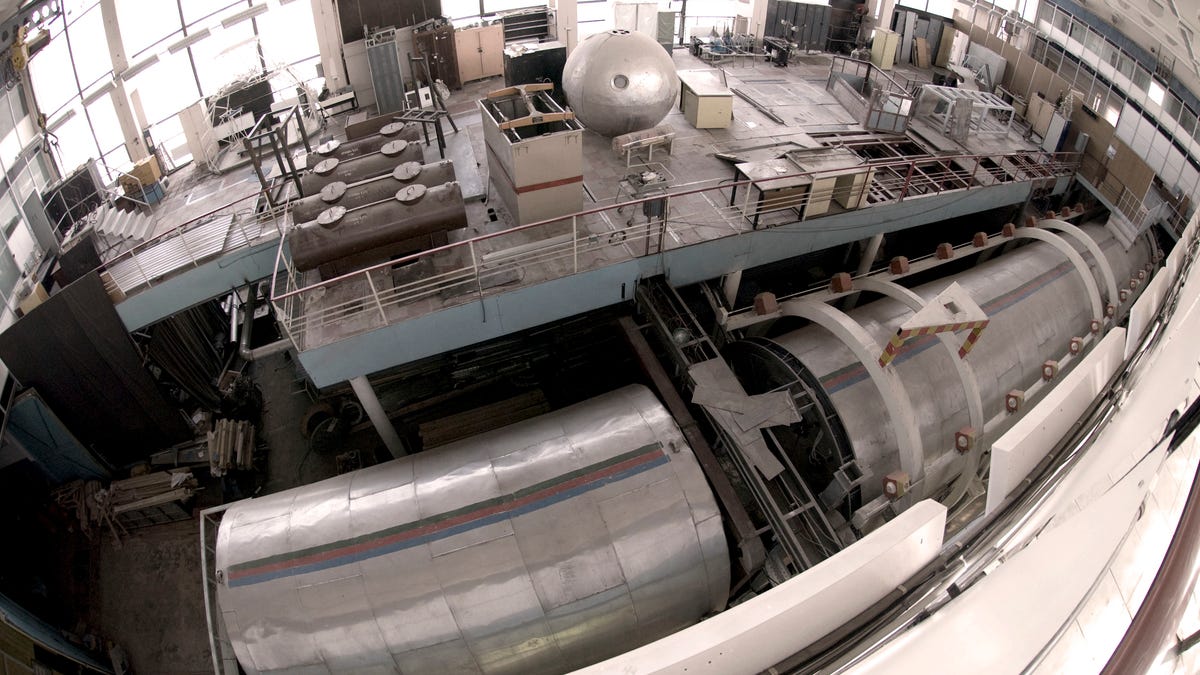Mars500 sojourners emerge from isolation
Euro-sextet ends a simulated Mars mission after 105 days sealed into a facility designed to mimic a potential spacecraft built to fly to Mars and back.

Sometime in the not-too-distant future, perhaps, we'll all be as excited about people landing on Mars as we were 40 years ago about the first moon landing. But don't hold your breath.
In the meantime, mission-to-Mars dreamers and wannabes will have to make do with Earth-bound exercises such as the European Space Agency's Mars500 program. Earlier this week, a group of six Mars500 participants emerged from a mission-to-Moscow mock-up meant to simulate part of what will eventually be a very long journey to the Red Planet.
The Euro-sextet ended their simulated Mars mission on Tuesday, after 105 days sealed into an isolation facility designed to replicate many features of a potential spacecraft built to fly to Mars and back. Since March 31, the participants (one from Germany, one from France, and four from Russia) have been engaged in science experiments, monitoring of their physiological state, and posting chirpy weekly updates.
"We had an outstanding team spirit throughout the entire 105 days," said Cyrille Fournier, the French airline pilot who posted many of the cheery log entries. "Living for that long in a confined environment can only work if the crew is really getting along with each other. The crew is the crucial key to mission success, which became very evident to me during the 105 days."
Team-building exercises included watching movies and playing music. The participants also grew their own veggies, including tomatoes, strawberries, radishes, and cabbage.
The other members of the Mars500 isolation ward were Oliver Knickel, a mechanical engineer in the German army; cosmonauts Sergei Ryazansky (commander) and Oleg Artemyev; Alexei Baranov, a medical doctor; and Alexei Shpakov, a sports physiologist.
In an entry from June 23, Fournier describes a typical day.
Along with the close quarters, the Mars500 crew had to endure modest hardships, including a 20-minute delay each way in communications with "Earth" and at least one incident that, in a real spacecraft, could have proved very bad indeed. Wrote Knickel in a May 19 account that had echoes of the Apollo 13 mission:
As Murphy's Law would have it, just after midnight on 12 May, we had an off-nominal situation when the air purification and conditioning system in the crew quarters failed. This could be seen from the operation center of our module, where you can watch and tune all parameters in all three modules--including temperature, atmospheric humidity, and the concentration of oxygen, carbon dioxide, and carbon monoxide. We quickly noticed an increase in temperature up to 30 degrees Celsius, as well as an increase of the carbon dioxide and carbon monoxide concentration in the air, which can quickly become life-threatening.
The in-house repairs turned out to be fairly simple, and the crew was able to press ahead with a celebration of Knickel's 29th birthday that included balloons, gifts, and karaoke in Russian.
Since there were apparently no "Silent Running"-style meltdowns, the European Space Agency and its Russian partner, the Institute of Biomedical Problems, plan to proceed with a longer simulation, a 520-day sojourn expected to start in early 2010.

